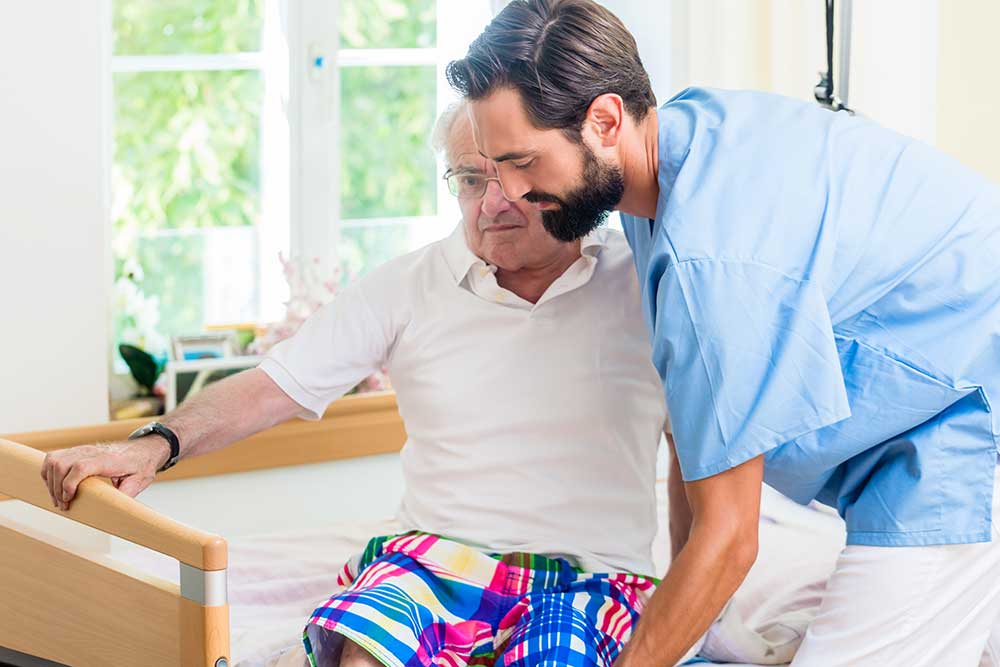Disclaimer: The information on our website is provided for general information purposes only. We make no representations or warranties of any kind, express or implied, about the completeness, accuracy, reliability, suitability or availability with respect to the website or the information contained on our website for any purpose. Any reliance on such information is therefore strictly at your own risk and we are not liable for any damages or losses arising out of or resulting from your reliance on any information contained on our website.
A Licensed Practical Nurse (LPN) cares for the basic medical needs of a patient. Furthermore, they monitor blood pressure and other vital signs. Additionally, they may assist with basic comforts like bathing, dressing, or grooming. LPNs also work in a variety of health care settings from clinics, hospitals, nursing homes, rehabilitation centers, or extended care facilities. Next, watch a video to learn what an LPN does.
How to Become a Licensed Practical Nurse

A licensed practical nurse is required to complete an approved educational program that normally takes 1 year in order to obtain a diploma or certificate. Programs are available in community colleges and trade schools. Every program would give supervised clinical experience. After receiving a diploma or certificate, an LPN would take the National Council Licensure Examination (NCLEX-PN) in order to get licensed to work. The exam is five hours long. According to the National Council of State Boards of Nursing, the national pass rate in 2015 for the NCLEX-PN was 81.89% for first-time test takers that were educated in the United States.
When looking for LPN programs, look for a school whose students have a high licensure exam pass rate. This information can be acquired when applying to an LPN program. Some programs may list their exam pass rate on the school’s website. If not, you can inquire when speaking to an admission advisor before committing to start an LPN program. Also, don’t forget to make sure the program is accredited and officially recognized by the boards of nursing. It must be accredited for you to sit for the exam. If they are not, you cannot register to take the NCLEX-PN exam and will be unable to get licensed.
Advanced Programs
LPNs can also take advanced programs available through professional associations in specialized areas. According to the National Federation of Licensed Practical Nurses, LPNs can be trained in medication treatment, specialized procedures, or critical care interventions. By the way, working as an LPN can also pave the way to becoming a registered nurse (RN). Many schools offer what’s called a ‘bridge’ programs. These programs take into account your LPN schooling and work experience and make it easier to transition to become an RN. LPN to RN bridge programs continue to build on the strong foundation LPNs have inpatient care and train in more advanced skills such as complex nursing assessments, pharmacology, and treatment care. Therefore an LPN certificate or diploma can also be used as a stepping-stone into a nursing career.
Job Description of an LPN
Depending on each state’s regulations, LPNs may be involved in medical care such as inserting catheters, intravenous drips (IVs), assisting to deliver babies, or giving approved medication. They would be responsible for keeping accurate records of a patient such as their history, diagnosis, progress, and any new medical problem that may occur and inform the doctor or registered nurse. He or she is overseen by a doctor or registered nurse.
Many facilities require work hours to exceed the normal 8-hour shifts. Therefore, according to the National Federation of Licensed Practical Nurses, it’s necessary to have physical strength and stamina due to the direct care to patients you will provide. An LPN should be compassionate, patient in difficult situations, and have interpersonal skills. They should have the ability to communicate clearly and be an attentive listener.
Licensed Practical Nurse Career Video Transcript
With equal parts of compassion and competence, licensed practical nurses and licensed vocational nurses, or LPNs and LVNs, play a crucial role in providing patient care. LPNs and LVNs help patients in nursing homes and other healthcare facilities, working under the direction of doctors and registered nurses, or RNs. LPNs and LVNs check patients’ vital signs, change dressings, and provide other types of basic patient care. They also help patients bathe and dress when needed. Record keeping is an important aspect of the job, as is communicating patients’ concerns and questions to doctors and RNs.
The exact duties of LPNs and LVNs vary by state, but their role on the front line of patient care doesn’t. Practical nursing takes patience and stamina. Attention to detail is essential in this career, as is being observant and communicating clearly. Licensed practical nurses and licensed vocational nurses work in nursing homes, hospitals, doctors’ offices, and in-home healthcare. Becoming an LPN or LVN starts with completing a state-approved program, which usually lasts about 1 year. Licensure is required in all states.
Article Citations
Bureau of Labor Statistics, U.S. Department of Labor, Occupational Outlook Handbook, Licensed Practical and Licensed Vocational Nurses.
National Center for O*NET Development. 29-2061.00. O*NET OnLine.
The career video is in the public domain from the U. S. Department of Labor, Employment and Training Administration.

